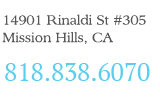Acne
Dermatologist West Los Angeles | Studio City | San Fernando Valley
Acne is the most frequent skin condition seen in the United States. It is characterized by pimples that appear on the face, neck, upper chest, and back. Although it most commonly affects adolescents (upwards of 80% have some form of acne), many adults struggle with acne as well.
Acne is made up of three main types of blemishes:
- Whiteheads/Blackheads, also known as comedones, are non-inflammatory and appear more on the central face. As long as they remain uninfected, they are unlikely to lead to scarring.
- Red Pustules or Papules are inflamed pores that fill with pus. These can lead to scarring.
- Nodules or Cysts are the most severe forms of acne. They are inflamed, deeper lesions that are often painful and very ferquently scar.
Causes
In normal skin, oil glands under the skin, known as sebaceous glands, produce an oily substance called sebum. The sebum moves from the bottom to the top of each hair follicle and then spills out onto the surface of the skin, taking with it sloughed-off skin cells.
With acne, the structure through which the sebum flows gets plugged up. This blockage traps sebum and sloughed-off cells below the skin, preventing them from being released onto the skin’s surface. If the pore’s opening is fully blocked, this produces a whitehead. If the pore’s opening is open, this produces blackheads. When either a whitehead or blackhead becomes inflammed, they can become red pustules or papules.
Other major factors that are involved in acne formation are genetics, hormones (specifically androgens such as testosterone), and overgrowth of P. acnes bacteria.
Pimples often heal with a darkening of the skin, which is called post-inflammatory hyperpigmentation. This darkening gradually resolves over time. It is important for patients not to pick or scratch at pimples because that can make increase the chance of pigmentation and long-term scarring.
Treatment
Treating acne is a relatively slow process; there is no overnight remedy. Treatments include:
- Topical Creams and Washes- Used in mild cases of acne to aid in exfoliation and decrease bacterial overgrowth and inflammation. These agents include benzoyl peroxide, topical antibiotics, and tretinoin (commonly known as Retin-A) creams.
- Oral Antibiotics- Used to treat inflammatory lesions.
- Hormonal- A few oral contraceptive pills have FDA-approval for the treatment of acne.
- Isotretinoin- A derivative of Vitamin A, used in severe cases of acne and acne resistant to other treatments. Isotretinoin is the closest medication to a cure for acne; however, it does carry many potential side effects, so close observation and follow-up is necessary.


